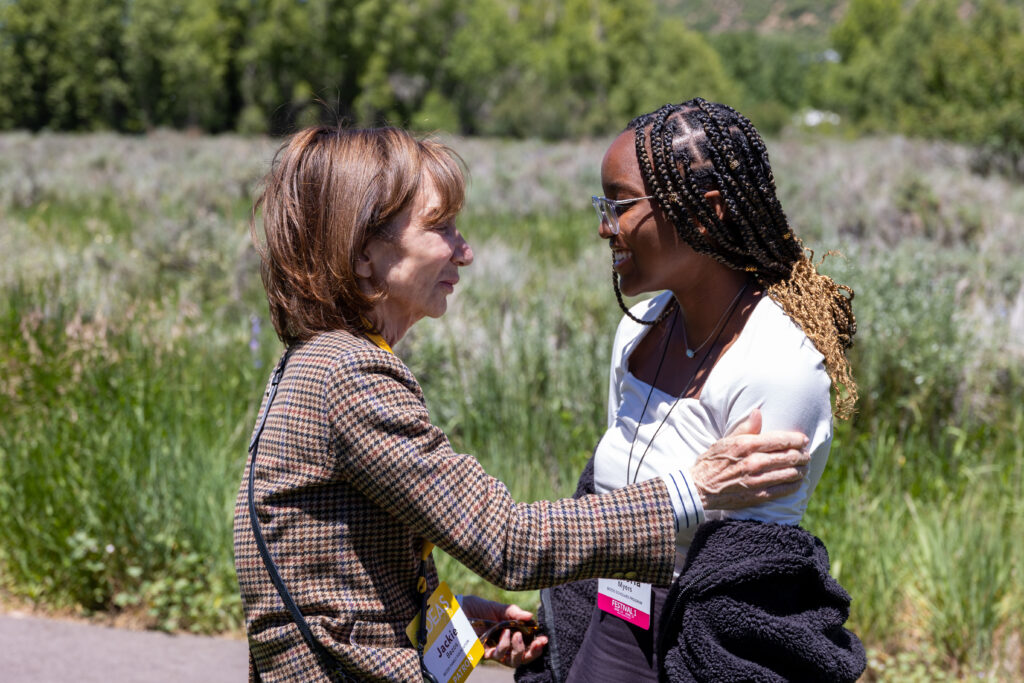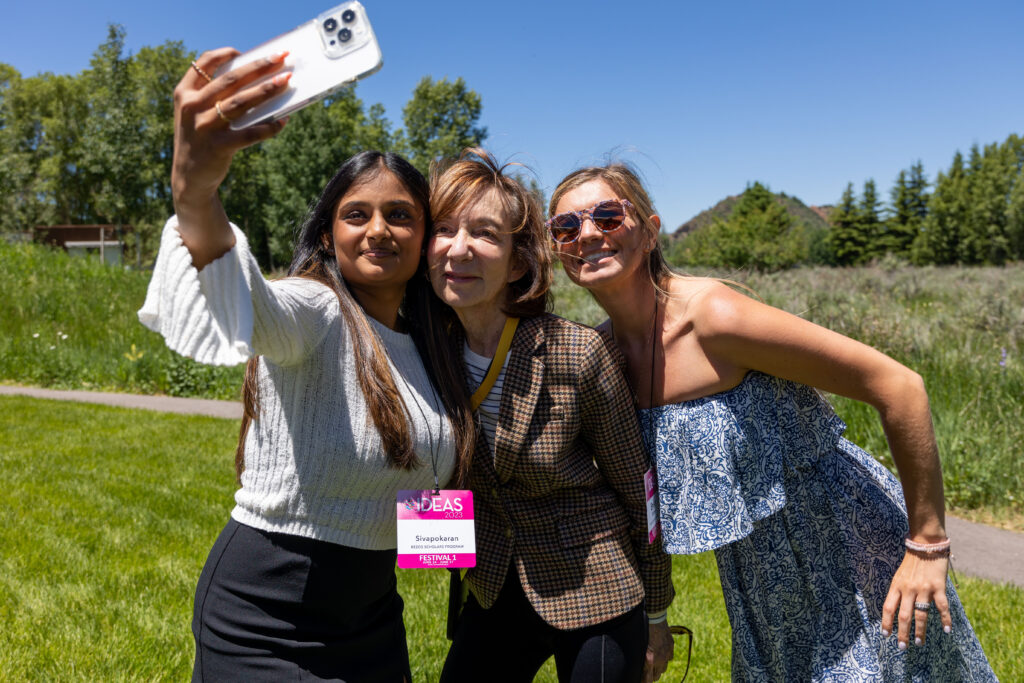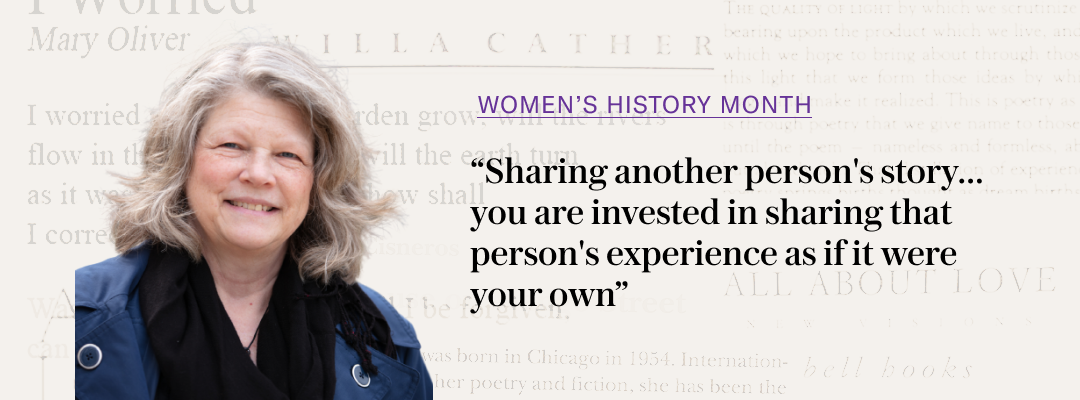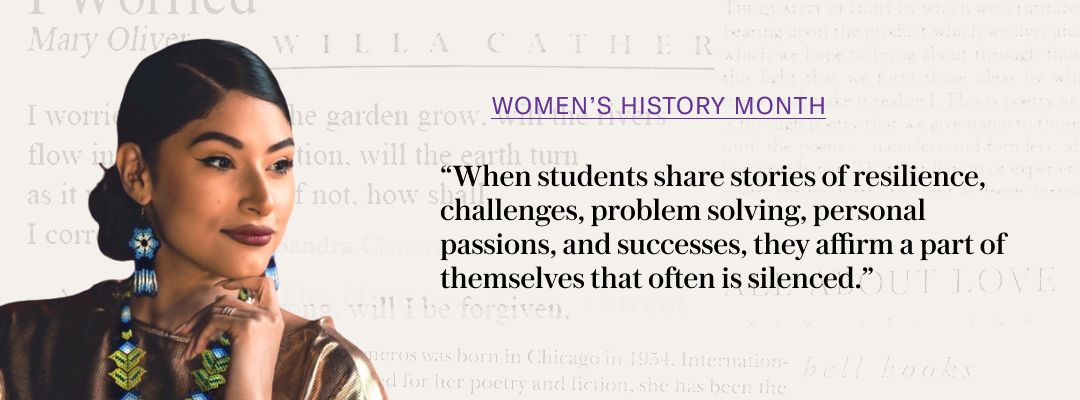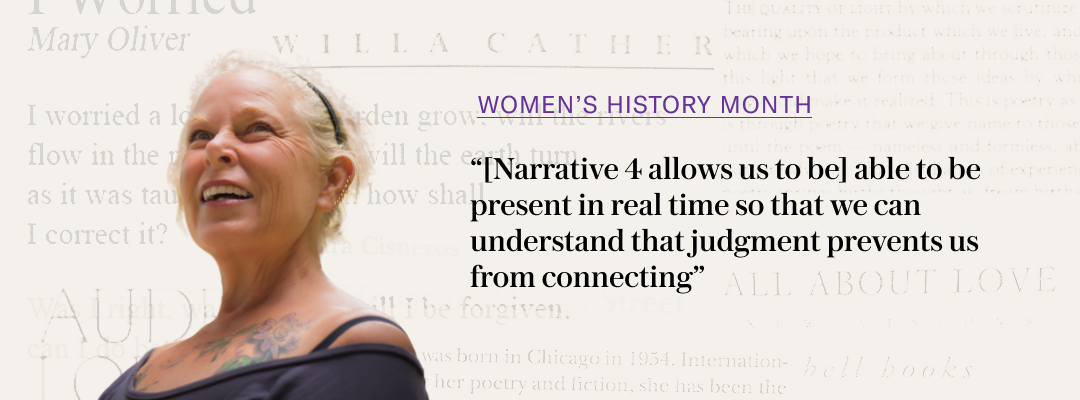Blog
A Narrative 4 Jackie

An essay by Narrative 4 co-founder and CEO Lisa Consiglio, honoring our supporter and benefactor, Jackie Bezos.
I am often asked how and when Narrative 4 was founded.
The long answer is that it’s a tapestry of endless narratives – all of them woven together over decades, slowly evolving into a powerful global organization bursting with people and passion. The short answer is that it was founded the moment someone else understood the blurry vision behind what would become N4 – and encouraged us to GO AS BIG AS POSSIBLE.
It was early February 2010, just days after a catastrophic earthquake struck Haiti and dozens of aftershocks had already registered. The death toll was rising exponentially. I was in a meeting with Jackie Bezos, a visionary philanthropist deeply committed to education. For a few years, she had been watching a story-based project my team was piloting with astounding results in our small Colorado community.
But there was a sense of urgency in her voice that day. She spoke of Haiti and how she hoped to help young people there find healing beyond what emergency relief workers were able to offer. She saw our little pilot project as a potential salve.
Her idea was to connect kids in Port-au-Prince and New Orleans through stories, with the obvious common denominator being natural disaster given the havoc Hurricane Katrina had wreaked five years prior. She had schools in mind, thoughts about a documentary, and possible partners that might join us. At the end of the discussion, she asked one simple question: “How big do you want this program to be?”
I didn’t hesitate. A few weeks later, two teams with six members each took off for New Orleans and Haiti for an intense ten-day program with Sci Academy and Cours Privés Edmé. We were armed with 80 pages of curriculum, boxes of art supplies, translators, key local partners, a documentary film crew, and a lot of determination. Satellites went down (we borrowed CNN’s). School rooms were unexpectedly locked (we used courtyards). Language barriers cropped up (the kids ended up translating for their friends). It appeared that the problems could be endless, but the kids were so enthusiastic, and we worked as a team to find solutions. It turned out that going big meant dreaming big too.
The stories flowed and the students opened up and trusted more as the days went by. We were invited into their homes. We talked to parents, neighbors, friends and gained further insight into their stories and communities.
On the final day, my team in New Orleans was documenting evaluations with the kids at Sci Academy. They were, of course, excited about the cameras in the room but as time went on, they seemed to forget about everything except what had happened over the past few days. They had been paired up with partners in Port-au-Prince. They had exchanged stories, created artwork in honor of one another, retold their partner’s story in the first person, shared recipes, old photos, and favorite objects. They now had profound respect – even love – for these people they only knew virtually.
We left feeling quite triumphant. The exchange had been a huge success. We had incredible footage. The kids had created beautiful artwork. The schools wanted to continue to partner. The teachers were transformed. Jackie and her team at the Bezos Family Foundation had joined our presentation virtually on the last day and they were beaming. We were ready to plan the next global exchange.
It took a few days for the lessons to sink in. I was watching footage of the kids from both schools and there were glaring commonalities that I had missed on the ground. They loved exchanging stories and stepping into someone else’s shoes for a while. They had never felt anything like it. Their eyes were bright. They were leaning into the camera. One boy licked his lips when he talked about the food his partner’s mother made. Another was crying so hard she could barely speak when recounting the horrors her partner had witnessed. Others laughed and talked of having a new extended family of people they’d never met. But it was clear that all of them – even their teachers – wanted more.
They wanted to know more about their partner’s family, friends, school, community, landscape, history, art, geography, religion, politics, language, problems, hopes and fears. Ten days was not enough. They wanted to stay connected. They wanted to work on community problems together. They wanted to stay engaged with the artists we had introduced them to. Their teachers wanted more tools to enable these changes. And suddenly what felt like a resounding success was laced with a tiny hint of failure. There were no next steps. There was no continuum.
We went back to work.
Two years later, in June of 2012, a group of artists from all over the world gathered in Colorado to consider the highest aim of stories and how we might harness their energy to transform our society. We were, of course, funded by Jackie Bezos. We talked of New Orleans, Haiti and the exchanges we had conducted around the world since that time. In five days, we knew we had a global movement that would be artist-driven, educator-shaped and student-led. Jackie was in the room when we decided to “GO BIG.” She helped us envision a world where young people would lead with empathy, learn about the world from one another’s stories, and work together to create change.
Narrative 4 was officially created six months later. Nothing could have been done without the vision of Jackie Bezos. The rest is not history. The rest is the future.
Perhaps only Jackie could possibly have imagined how transformational Narrative 4’s impact would become in just nine short years. Between 2013 and 2021, the reach of our radical empathy-building programs is now across four continents, 42 countries, and 36 US states. Our budget expanded more than seven-fold. We strategically grew and strengthened our organization to support that growth, including hiring a top-tier, talented team of leaders, while developing policies and procedures to ensure we evolved into an enduring institution.
Our mission has also evolved alongside our resources and reach. Today, we use the power of stories, art, and education to equip young people to become powerful forces of change in society, combatting the loneliness and apathy that has become so prevalent.
To date, storytelling—the most accessible and universal of all human activities—has been the most central method we’ve used to achieve our mission. Our work is shaped by a theory of change grounded in the idea that through the exchange of personal narratives and the experiential learning that ensues, youth will see the world, themselves, and one another more empathically—and will therefore be more willing to act compassionately.
The divides grow smaller when the world GOES BIG.
